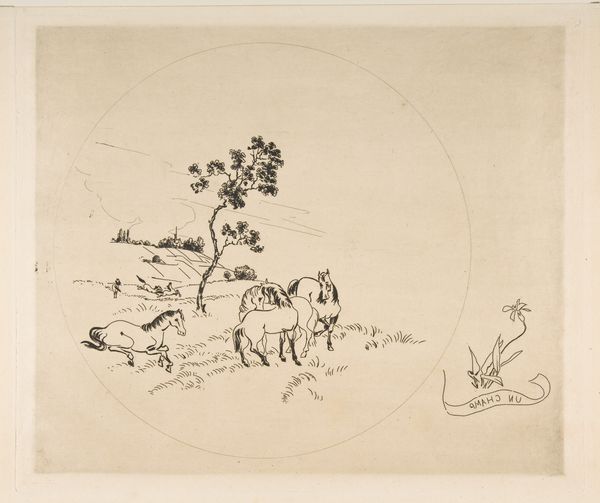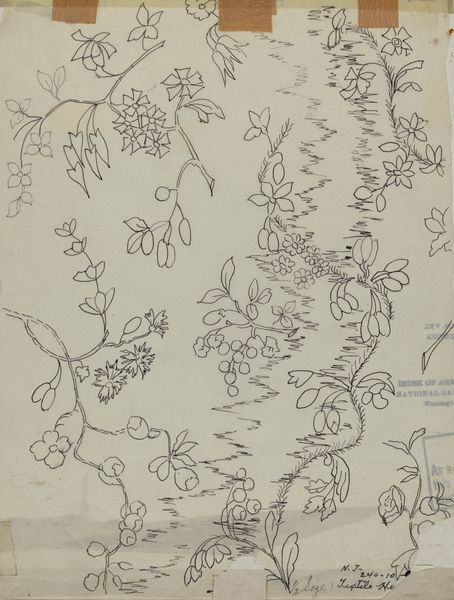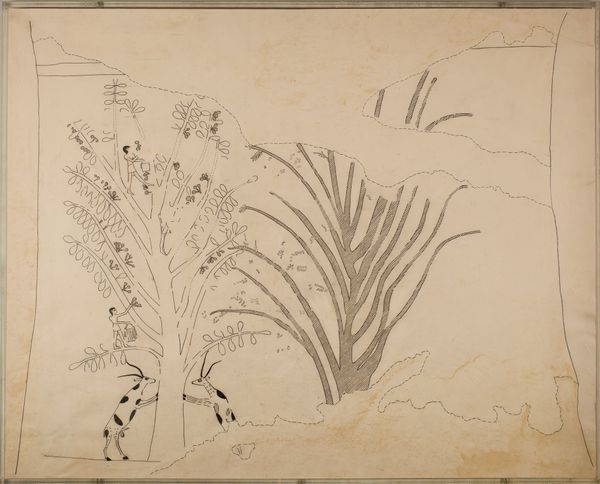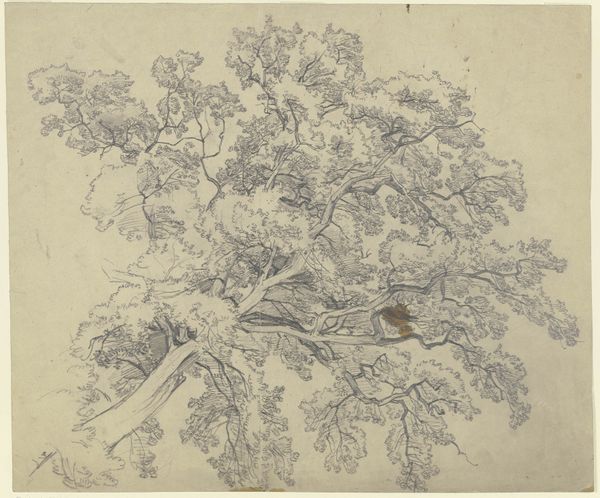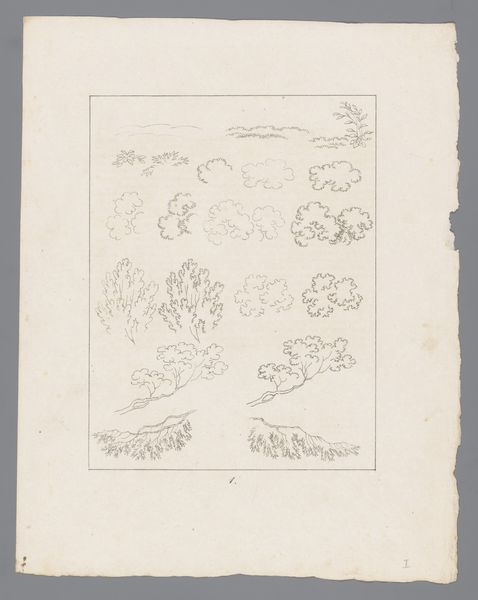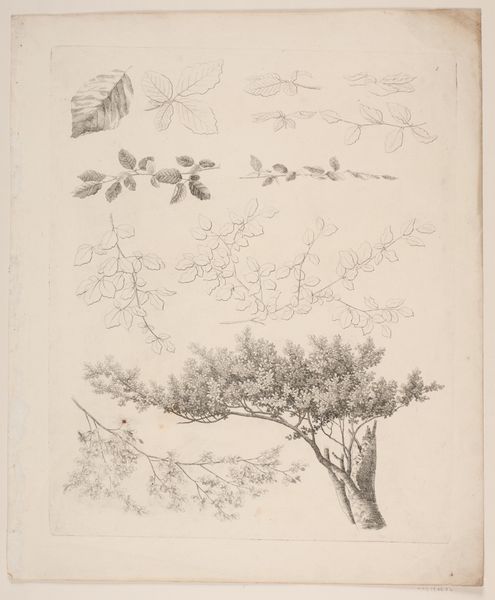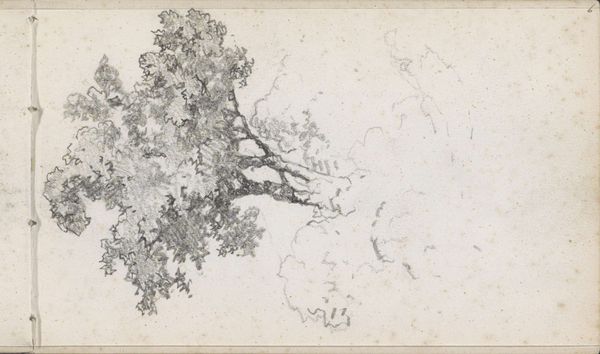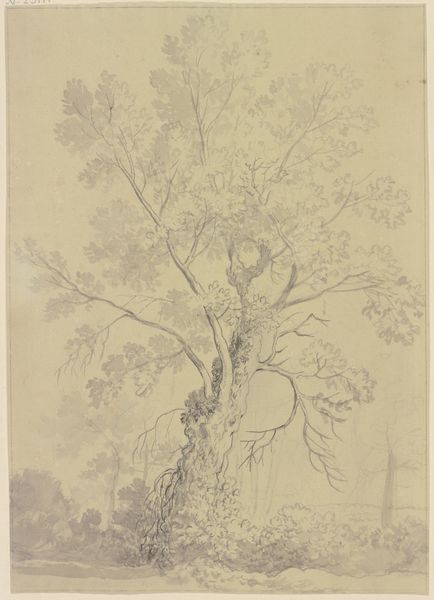
print, etching
#
light pencil work
#
ink drawing
#
pen drawing
# print
#
pen sketch
#
etching
#
pencil sketch
#
landscape
#
ink drawing experimentation
#
pen-ink sketch
#
pen work
#
sketchbook drawing
#
sketchbook art
Dimensions: Sheet: 12 5/16 × 18 3/4 in. (31.3 × 47.7 cm) Plate: 11 5/8 × 13 5/8 in. (29.6 × 34.6 cm)
Copyright: Public Domain
Curator: Félix Bracquemond, a key figure in the French etching revival, designed this print in 1870. It’s titled “Decoration for a Plate: A Stream,” currently held at the Metropolitan Museum of Art. You know, I’m really struck by the interplay between fine art and functional design at the time. Editor: Immediately, the circular composition makes me think of ancient cosmological diagrams—a miniature world contained within a symbolic boundary. Curator: Absolutely. And this brings us to the heart of Bracquemond's Japonisme influence. Japanese art celebrated the everyday. This wasn't merely decorative; it reflected a broader cultural integration of nature. Editor: Yes! Think about the symbolism embedded in these natural elements. The stream can be understood as life’s flow; the deer suggest grace and peace... and that single wildflower speaks to resilient beauty. Curator: The presentation as a proposed plate decoration served to domesticate these symbols for a bourgeois audience newly fascinated by eastern aesthetics. Note the small, almost whimsical birds with the ribbon—this wasn't art divorced from life. Editor: Bracquemond employs very precise ink work here to define forms and suggest textures. These delicate lines are highly suggestive. What do the birds communicate about how natural images became trendy commodities? Curator: Well, prints like these certainly played a role in democratizing art appreciation! With this piece, Bracquemond brings an idyllic view into the home. He straddles fine art and artisanal design. It also begs the question of elite taste, I suppose. Editor: It almost prefigures the Arts and Crafts movement, doesn't it? Finding spiritual value in crafted objects. Curator: A vital connection, I agree! Seeing "Decoration for a Plate: A Stream" through this lens highlights the intertwined history of art, industry, and cultural exchange. Editor: For me, engaging with the artwork reveals something enduring about humanity's ongoing fascination with symbols found in nature. These echo far beyond mere decoration.
Comments
No comments
Be the first to comment and join the conversation on the ultimate creative platform.
